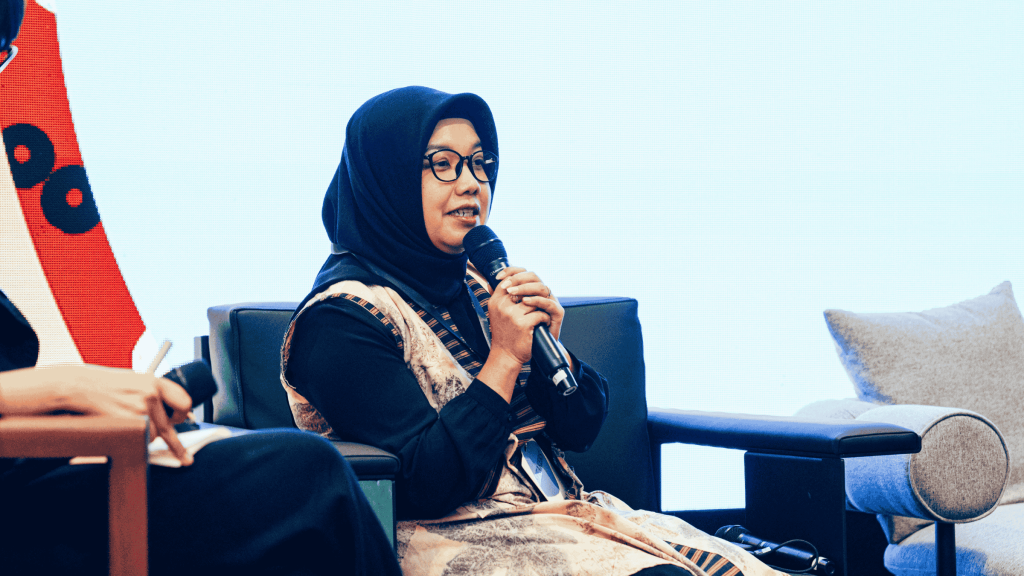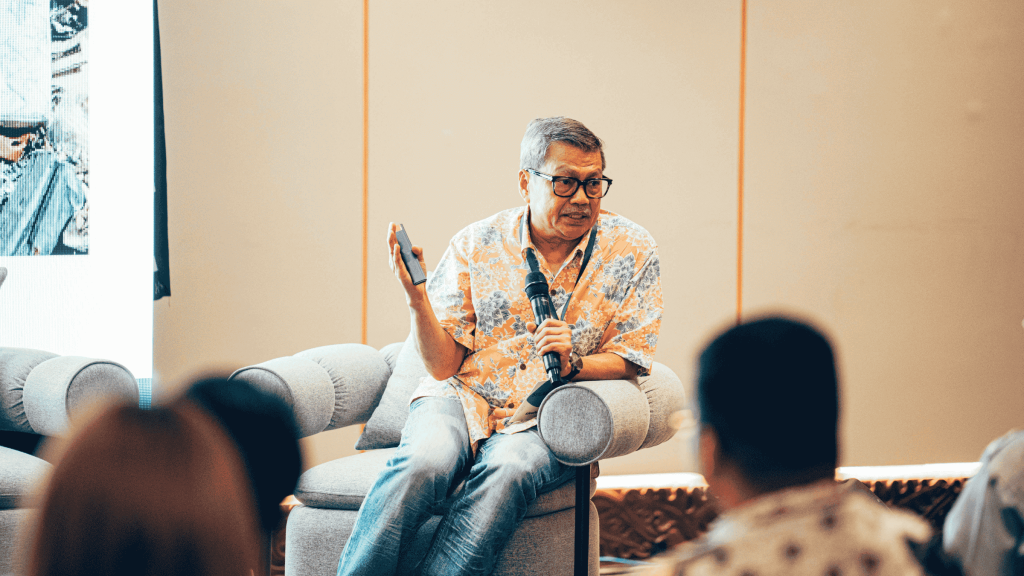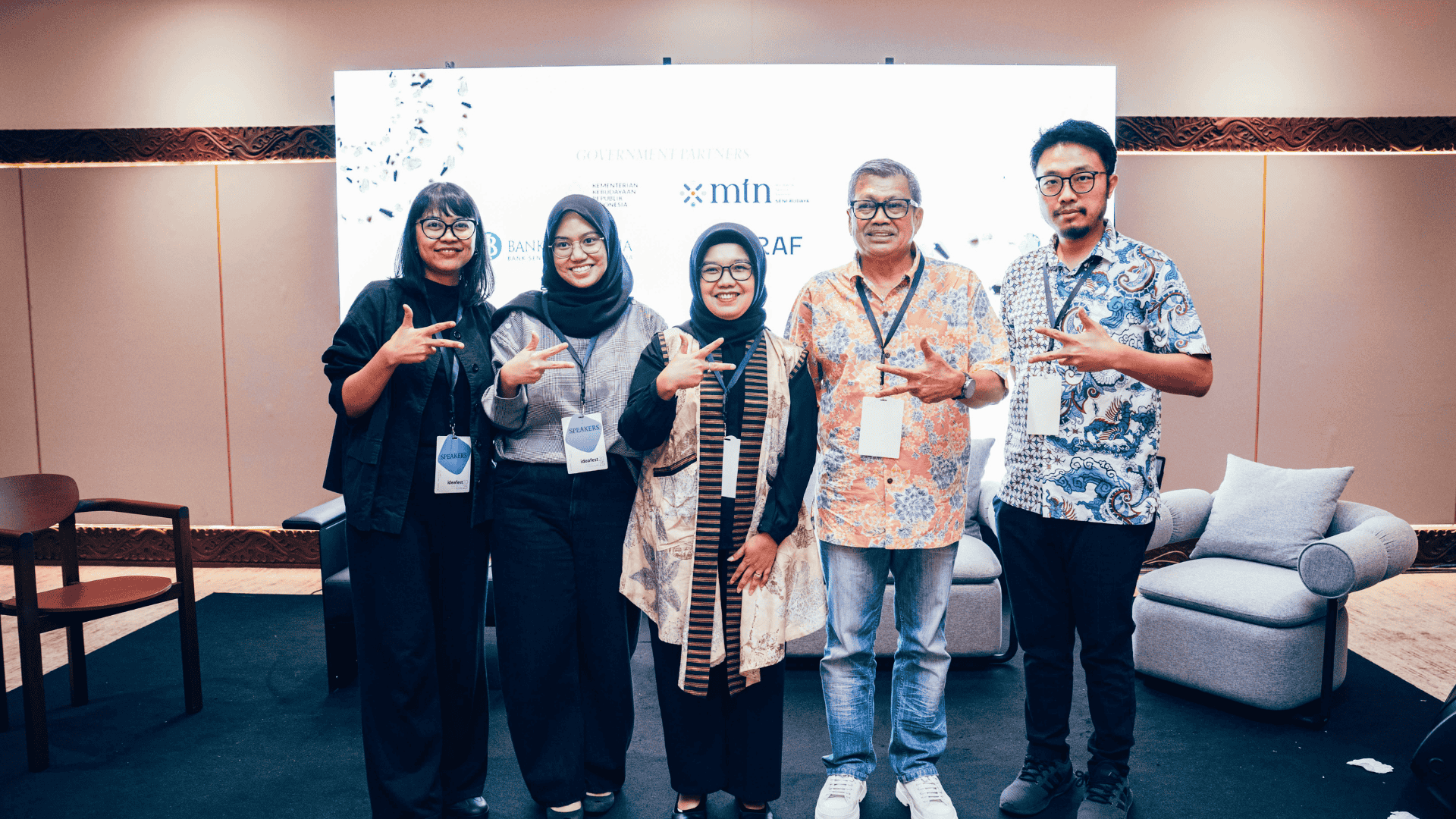Jakarta, November 2, 2025 — The discussion “Circularity, Fashion, and the New Engine of Growth” highlighted how Indonesia’s creative economy can thrive through sustainable innovation and cross-sector collaboration. The event brought together stakeholders from government, industry, and creative enterprises, including representatives from the Ministry of Creative Economy, Rantai Tekstil Lestari (RTL), The New Factory (TNF), and the Indonesian Textile Association (API).
Fashion as a Leading Subsector in Creative Economy
Representing the Directorate of Fashion, Romi Astuti highlighted that fashion contributes 55% of Indonesia’s creative economy exports, employing millions and driving innovation. However, the sector also faces pressing environmental challenges such as textile waste, energy-intensive production, and the dominance of fast fashion.
To address this, the Ministry is embedding sustainability principles into every stage—from design and production to consumption and conservation.

A new Ministerial and Presidential Regulation is being drafted to strengthen coordination in the development of Indonesian Muslim Modest Fashion, aligning with Indonesia’s ambition to become a global modest fashion hub.

Circular Economy: From Awareness to Opportunity
Basrie Kamba, Chair of Rantai Tekstil Lestari (RTL) reminded participants that circularity is not only about sustainability—it is about business opportunities.
RTL promotes circular innovation across industries and encourages young entrepreneurs to take part in transforming waste into value. As one of only four countries globally participating in the Circular Fashion Partnership, Indonesia is already positioning itself as a regional leader in circular initiatives.
ACEBA’s framework outlines three pillars of circularity:
- Resource Substitution – replacing traditional materials with sustainable alternatives,
- Resource Efficiency – reducing energy, water, and chemical use, and
- Resource Circularity – designing systems for product recovery and recycling.
Basrie also encouraged SMEs and startups to share their sustainability stories on aceba.co to connect with potential partners and investors across Asia and Europe.

Upcycling and Empowerment from The New Factory
Alia Sarasita, CEO of The New Factory (TNF), introduced their model as a worker cooperative dedicated to upcycling textile waste. TNF’s work demonstrates how post-industrial and post-consumer waste can be transformed into high-value products—from apparel and home interiors to solid panels for furniture.
By engaging designers, seamsters, and carpenters in one ecosystem, TNF creates not only environmental impact but also social empowerment, transitioning informal workers into the formal green economy.
Their approach highlights that upcycling is particularly well-suited for SME-scale operations, where creativity and local craftsmanship can directly contribute to sustainability.

Decarbonizing Indonesia’s Textile Industry
Ian Syarif, Vice Chair of API (Asosiasi Pertekstilan Indonesia) presented advancements in the Textile and Garment (TPT) industry, which employs nearly 3.9 million workers and contributes around 20% of manufacturing jobs in Indonesia.
The sector is adopting cleaner technologies—reducing water use from 20 liters to just 4 liters per kilogram of fabric, utilizing steam-based dyeing and sublimation printing that require no water, and shifting toward renewable energy sources like rice husks and biomass pellets.
Wastewater is now treated using biological systems that ensure discharged water is cleaner than its original source—showing that sustainability and profitability can indeed go hand-in-hand.
Toward an Inclusive and Circular Future
The Q&A session underscored the importance of mapping creative economy actors, especially SMEs engaged in sustainable design, and enhancing business matchmaking through digital platforms like hub.kraf.go.id and aceba.co.
The session concluded with a powerful reminder:
“What is left over must not be in vain. What is obsolete can become an opportunity, because those who think circularly are those who are ready to organize the future.”


